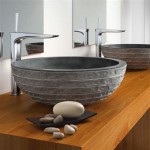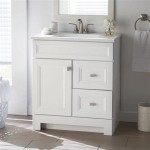Why Is Your Bathroom Sink Clogged? Understanding the Culprits and Solutions
A clogged bathroom sink is a common household nuisance. It can disrupt daily routines, leading to frustration and potentially even requiring professional plumbing assistance. Understanding the reasons behind sink clogs is crucial to preventing them and addressing them effectively when they occur. This article explores the primary causes of bathroom sink clogs, providing insights into identification and mitigation strategies.
Hair: The Primary Offender
Human hair is arguably the most frequent cause of bathroom sink clogs. During routine activities such as washing hair, shaving, and brushing, strands inevitably find their way into the drain. While a single strand of hair might seem insignificant, the cumulative effect of multiple strands, especially over time, can be considerable. Hair tends to bind together, creating a net-like structure within the drainpipe. This net then traps other debris, such as soap scum, toothpaste residue, and skin cells, compounding the problem and progressively restricting water flow.
The microscopic scales on the surface of each hair strand contribute to its ability to cling to the interior of drainpipes. These scales act like tiny barbs, catching onto imperfections and irregularities in the pipe's surface. As more hair accumulates, the blockage becomes denser and more difficult to dislodge. The presence of hair also interacts with the oily components of soap and other bathroom products, creating a sticky, resistant mass that adheres firmly to the pipe walls.
Prevention is key to minimizing hair-related clogs. Installing a mesh screen or strainer over the drain opening is a simple yet effective measure. These devices catch hair and other debris before they enter the drainpipe, significantly reducing the likelihood of a clog forming. Regular cleaning of the strainer is essential to prevent it from becoming clogged itself, typically involving removing accumulated debris and rinsing it under running water. Avoiding direct disposal of clumps of hair into the sink is also advised. Instead, dispose of hair in a trash receptacle.
When a clog has already formed, several methods can be employed to remove the hair. A pair of needle-nose pliers or tweezers can be used to manually extract visible hair from the drain opening. Specialized drain-cleaning tools, such as drain snakes or barbed plastic strips, are designed to reach further into the pipe and grab onto hair, allowing it to be pulled out. Chemical drain cleaners can dissolve organic matter, including hair, but their use should be approached with caution due to their potential to damage pipes and pose environmental risks. Alternatives, like baking soda and vinegar solution, are considered safer options for less severe clogs.
Soap Scum and Product Buildup
Soap scum is another major contributor to bathroom sink clogs. It forms when soap reacts with the minerals present in hard water, creating a hard, insoluble residue that coats the interior of drainpipes. This scum consists primarily of calcium and magnesium salts of fatty acids. Over time, the accumulation of soap scum narrows the diameter of the pipe, restricting water flow and eventually leading to a complete blockage.
The type of soap used can influence the rate and severity of soap scum buildup. Traditional bar soaps, which often contain a high percentage of tallow or vegetable oil, tend to produce more soap scum than liquid soaps. Liquid soaps are typically formulated with synthetic detergents that are less likely to react with hard water minerals. Similarly, some bath products, such as lotions, creams, and shampoos, contain oils and emollients that can contribute to the formation of sticky residue in the drainpipe.
Preventing soap scum buildup involves several strategies. Using liquid soaps instead of bar soaps can reduce the amount of residue produced. Installing a water softener can significantly reduce the mineral content of the water, minimizing the reaction between soap and minerals. Regularly flushing the drain with hot water after each use can help to dissolve and wash away any residual soap scum before it has a chance to harden. Cleaning the sink and drain regularly with a mild acidic cleaner, such as vinegar or lemon juice, can help to dissolve existing soap scum deposits.
Addressing existing soap scum clogs requires a different approach. Hot water alone may not be sufficient to dissolve hardened soap scum. Chemical drain cleaners specifically formulated to dissolve soap scum can be effective, but again, caution should be exercised. A more environmentally friendly and less corrosive option is to use a mixture of baking soda and vinegar. Pouring a cup of baking soda down the drain, followed by a cup of vinegar, will create a fizzing reaction that can help to break down the soap scum. After allowing the mixture to sit for about 30 minutes, flush the drain with hot water.
Foreign Objects: Unintentional Obstructions
Foreign objects accidentally introduced into the bathroom sink drain can also cause clogs. These objects can range from small items like toothpaste caps and cotton swabs to larger items like jewelry and medication pills. Unlike hair and soap scum, which gradually accumulate over time, foreign objects can cause an immediate and complete blockage of the drainpipe. The severity of the clog depends on the size and shape of the object, as well as its location within the drainpipe.
Children's toys and small bathroom accessories are common culprits. These items can easily slip down the drain, especially if the drain opening is not covered by a strainer or stopper. Similarly, disposable contact lenses, dental floss, and razor blade casings can inadvertently find their way into the drain. These objects may not completely block the drain on their own, but they can act as a nucleus around which other debris accumulates, eventually leading to a larger and more problematic clog.
Preventing foreign object clogs requires vigilance and careful habits. Ensuring that the drain opening is always covered by a strainer or stopper can prevent many small objects from entering the drainpipe. Being mindful of the items placed near the sink can reduce the likelihood of accidental drops. Properly disposing of potentially problematic items, such as cotton swabs and dental floss, in a trash receptacle is essential. Educating children about the importance of not placing toys or other objects near the sink can also help to prevent clogs.
Removing foreign object clogs can be challenging. If the object is visible and easily accessible, it may be possible to retrieve it with tweezers or pliers. However, if the object is lodged deeper within the drainpipe, more specialized tools may be required. A drain snake can be used to attempt to push the object through the pipe or to snag it and pull it back out. In some cases, it may be necessary to disassemble the drainpipe to gain access to the object. If the clog is particularly stubborn or inaccessible, professional plumbing assistance may be required.
The design of the P-trap, the curved section of pipe located under the sink, plays a critical role in preventing clogs from traveling deeper into the plumbing system. The P-trap is designed to trap water, creating a water seal that prevents sewer gases from entering the bathroom. However, it also serves as a collection point for debris and foreign objects. When a clog forms in the P-trap, it is often easier to access and remove than a clog located further down the drainpipe. Disconnecting the P-trap and cleaning it out is a common troubleshooting step for sink clogs.
Furthermore, the age and material of the drainpipes can influence the likelihood of clogs. Older pipes, particularly those made of cast iron, may have corroded or roughened interiors, providing more surface area for debris to cling to. Plastic pipes, such as PVC or ABS, are generally smoother and less prone to clogs. However, all types of pipes can accumulate buildup over time. Regular maintenance, including flushing the drain with hot water and cleaning with appropriate cleaning solutions, can help to keep the pipes clear and prevent clogs from forming. Understanding the specific characteristics of the plumbing system can inform preventative maintenance practices and troubleshooting strategies for sink clogs.

Why Is Your Bathroom Sink Clogged Order A Plumber

Why Is My Sink Clogged Mike Diamond

How To Unclog A Bathroom Sink Hana S Happy Home

5 Natural Ways To Unclog A Bathroom Sink Hiller How

How To Unclog A Bathroom Sink The Home Depot

Bathroom Sink Clog Billy The Sunshine Plumber

Why Does My Bathroom Sink Clog

4 Reasons Behind A Clogged Bathroom Sink Plumber In Rhome Tx

Why Is Your Bathroom Sink Clogging

How To Unclog A Bathroom Sink The Home Depot
Related Posts






